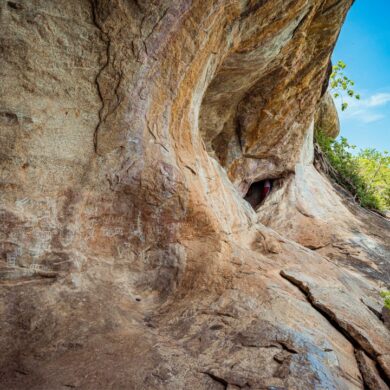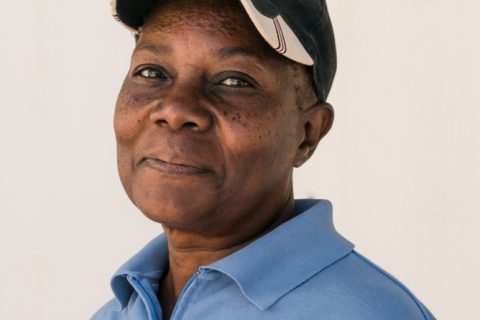Pan-African Heritage World Museum – Preserving the African cultural heritage

The museum space, in a four-story building, will bring together an exhibition that recounts the history of Africa, visiting the millennial civilizations of Yoruba and Egypt, leading us through pre-colonial kingdoms…
The idea of building a museum “dedicated to sharing the true history of Africa and its people, from the creation of the human being to the present day, under the watchful eye of the world’s most famous scholars” came from a fervent Ghanaian Pan-Africanist, Kojo Yankah, also a journalist, writer, university professor, former member of parliament and former minister of Ghana. He has matured the idea since the decade of 1960, to present it to its peers in the 21st century. The proposal was promptly embraced by many of his friends, scholars passionate about the history of the continent and defenders of African solidarity, for whom participating in the initiative is a cause of pride.
From the original idea, they came up with the project of a museum space that will bring together, in a four-story building, an exhibition that recounts the history of Africa, visiting the millennial civilizations of Yoruba and Egypt, leading us through pre-colonial kingdoms and empires, presenting the thought of the first Pan-Africanists, such as Wilmot Blyden, James Johnson or W. E. B. Du Bois, and recalling the work of those who, like Kwame Nkrumah or Julius Nyerere, among many others, led their countries after Independence, or Nelson Mandela’s calls for peace.
Advertising
The building where the museum will operate, designed by the Ghanaian architect George Wireko Brobby, has the form of an animal horn, a symbol of strength and humility, which in ancient times preceded the trumpet as an instrument used for communication between the living ones and the long-deceased ones, in special ceremonies. Filled with African symbols and elements, the work is described as “a beacon for the Pan-African Family around the world, representing the proverbial urgent call to bring everyone together for true reconciliation and liberation.”
In addition to the collection already gathered, in an interview last December to the virtual Southworld publication, Kojo Yankah said that it (the museum) will “request the return of works of art that were taken from Africa and are now in museums scattered across the world. We have a rich history since humanity was created in Africa and civilization began on this continent. This is our inheritance. It is important to reclaim our history, our patrimony and our inheritance.” he said.
To achieve this endeavour, the enterprise has the support of two organizations focused especially on African issues, the Pan-African Heritage World, which aims to preserve and communicate the history, ideals, philosophy and cultural heritage of the Afro-descendants, and Face2Face Africa, a New York-based communications company that covers informative topics related to the African continent from politics to entertainment. Together they got down to work and developed the project that was gradually conquering more allies around the world – the government of Ghana, where the Museum is being built, was followed by institutions such as the African Union Commission, the Association of African Universities or UNESCO, among others.
Presented as an international non-political and non-profit NGO, the museum is based on a governance model overseen by a board of directors composed of a large group of academics that guarantee its credibility.
Back to the roots
On September 21, 2020, and due to restrictions caused by the Covid 19 pandemic, the new museum world launch took place through a virtual ceremony attended by some of the dignitaries involved in the project, starting with the President of the Republic of Ghana, Nana Akufo-Addo, who justified his Executive’s support by stating that it is “an innovative Pan-African Project,” and by arguing that “the time has come for all of us to take our heritage seriously. No one needs to tell us that we have a rich history made up of remarkable achievements in the arts, sciences, and technology.”
On the other hand, the mentor of initiative, Kojo Yankah, visibly moved by the realization of his plans, said: “After centuries of separation, people of African descent have an obligation to share a common space that helps to bridge the wide gap that exists among them as a result of deliberate mis-education and historical oppression. The Pan-African World Heritage Museum fulfills this obligation.”
Clarifying the reference to separation, Sandra Appiah, the CEO of Face2face Africa, pointed out that “several centuries ago when enslaved Africans walked through the ‘Door Of No Return’ in Cape Coast to a world unknown, it was not simply an abduction of human resource. It was a symbolic moment that severed ties between those home and away. At Face2face Africa, the quest has been to mend these ties as well as be the voice telling the story of Africans separated by chains and by choice. And that is why we are proud to be a part of (the construction) of a historic Pan-African Heritage World Museum project in Winneba, not far from the Elmina (Slave) Castle.”

“We have a rich history since humanity was created in Africa and civilization began on this continent. This is our inheritance. It is important to reclaim our history, our patrimony and our inheritance.” Kojo Yankah.
Preserving the African heritage
Under construction, the museological complex will be located in the Pomadze Hills region, about 45 kms from Accra, the country’s capital which is one of the most sought-after tourist destinations in West Africa; authorities have been encouraging Africans living outside the continent to visit, highlighting historical sites such as Cape Coast Castle (visited by Michelle and Barack Obama in 2009), from where generations of enslaved Africans left to the American territories. In 2019, the country created the “Year of Return” program, inviting its descendants to return to the continent.
From an area of 300.000 kms2 will born the one that is defined as “the first living museum of its kind in Africa”. A complex that includes the Pan-African Park of the Heroes, a garden with sculptures of prominent figures from Africa’s history, Art, Science, Sport and Entertainment; the Palace of African Kingdoms, a museum exhibition that reports the history of the continent and its people through replicas of its kingdoms; the African Plants Village, which gathers specimens of African flora; hotels and conference centres; and venues for entertainment.
In the aforementioned interview with Southwold, Kojo Yankah revealed that the construction cost is estimated at about thirty million dollars, financed by “grants, donations and other fundraising activities. It must be said that the fundraising has already started in various places, both on the continent and in the diaspora”.
The organization structure is composed of an Honorary Council of Patrons (African kings as well as eminent presidents and dignitaries), an Advisory Council, a Board of Trustees, an International Academic Council, and the Executive Committee of the Museum Management. The project should have its physical facilities built by the end of 2022; it is up to the Board of Trustees to deliberate on the museum collections, preservation, archive and conservation of the collection, and the recruitment, training, and capacity-building of the museum staff.
Pending on the inauguration, the first annual conference of the Museum, to be held in Accra, Ghana, will take place in August 2021, under the theme “Bridging the Gap among Africans through Scholarship, Culture, Entrepreneurship and Technology”. During the event, the online version of the museum space will be released before the actual visit.
Until then, let us remember the words of Kojo Yankah that we stand “on the shoulders of our ancestors”, dedicating the new museum “to the youth of the world”: Our own story must be told, curated, preserved, and used as teaching materials to lift up their spirits; to raise their level of self-confidence; inspire them to aim for social equality and justice and to make them what we desire for all humanity as equal citizens of the world and to live in peace.”

Website: https:// www.pahw.org
Facebook: Fans of Pan African Heritage World Museum
Edição 84 SET/OUT| Download.




































0 Comments